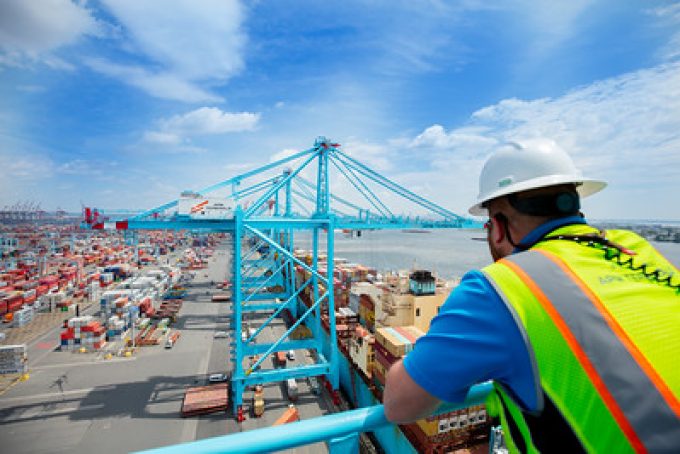MSC Aries crew set for release 'on humanitarian grounds', says Iran
The crew of the seized containership MSC Aries are reportedly set to be released after ...

The port of New York and New Jersey (NY/NJ) is emerging as the main alternative for shippers that traditionally route their cargo through Baltimore.
Following the collapse of the Francis Scott Key Bridge on 26 March at the entrance to Baltimore Port, the US east coast’s fifth largest gateway was cut off, leaving shippers and carriers hunting for alternatives.
Baltimore handled 1.1m teu in 2023, with three carriers – MSC, Maersk and Zim – accounting for almost two-thirds of these volumes, according to S&P Global Market Intelligence.
A Loadstar analysis of the liner services that regularly call at Baltimore shows how the three carriers dominate the port’s container trades with a service portfolio that includes: the 2M’s TP12/Empire Asia-USEC service, on which Zim charters slots; the 2M’s TA2/NEUATL2 transatlantic service; Zim’s standalone ZXB Asia-USEC service; Maersk’s standalone US-South Africa Amex string; and MSC’s South America-North America SAEC 1 service, on which Zim charters some 20% of the capacity.
Yesterday, MSC advised customers of the T12/Empire service that until the end of the first week in May, all Baltimore-bound cargo would be unloaded at NY/NJ – mostly likely APM Terminals’ facility at Port Elizabeth, where the service calls prior to its normal call at Baltimore’s Seagirt Marine Terminal, and SEAC 1 service Baltimore-bound containers would be unloaded at New Jersey’s Port Newark facility.
According to S&P Global, in the 12 months to the end of February, MSC, Zim and Maersk shipped slightly less than 350,000 teu into Baltimore, traffic observers believe can be soaked up at other east coast ports, short- to medium-term.
Drewry’s ports director, Eirik Hooper, told a forthcoming Loadstar podcast: “The short answer is that there are ports available, but there will be capacity constraints throughout.
“It all depends on the view of how long it will take to clear the seaway into Baltimore,” he added.
And Rhenus North America director Stephanie Loomis told today’s Loadstar podcast: “This is another unfortunate blow to the east coast ports, with everything going on, from the longer transit times around Africa to the Panama Canal drought.
“It’s certainly not good news for the east coast overall, and this would have been a much bigger issue should it have been any of the others, but Baltimore is sort of a niche port.
“Unless you’re in Baltimore – those folks, I feel badly for, not to mention their traffic nightmares that they’re living through now,” she added.
And Mr Hooper advised shippers and forwarders to monitor terminal utilisation and pre-berth vessel waiting times for signs of port congestion in New York and elsewhere.
“With vessel waiting times outside the Hampton Road ports [the port of Norfolk] running at an average of about half a day for pre-berth and waiting, we do think there might be some capacity constraints. Our research indicated utilisation in 2023 in the northern range of the US east coast was about 60%.
“If we remove the Baltimore capacity from that market and we spread Baltimore’s volumes across the other ports of that range, and we look at the overall expected market increase, utilisation could rise as high as 80%, which is manageable for a short time.
“But if that persists, that level of utilisation will likely cause delays and capacity constraints at those terminals – if those pre-berth waiting times begin to increase at New York, New Jersey and Hampton Roads terminals, that will indicate that those terminals are struggling with the additional throughput from Baltimore,” he added.
Comment on this article